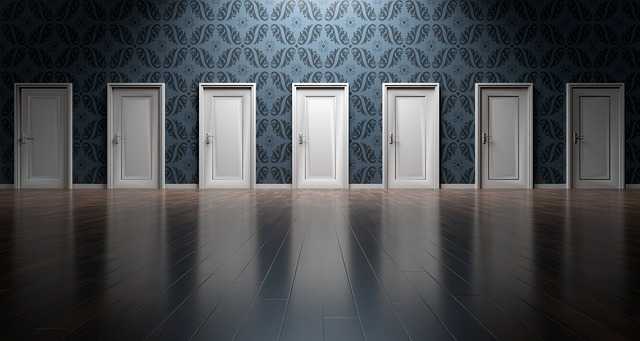Table of Contents
- Exploring the Foundations of Abstract Painting Techniques
- The Emotional Language of Color in Abstract Art
- Choosing the Right Materials for Stunning Abstract Creations
- Tips for Developing Your Unique Abstract Style
- Q&A
- The Conclusion


Exploring the Foundations of Abstract Painting Techniques
Abstract painting is a captivating realm where artists traverse the boundaries of conventional representation. One of the fundamental techniques in this genre is color theory, which examines how colors interact and influence emotions. Understanding the primary, secondary, and tertiary colors can empower artists to create vibrant compositions that evoke a specific mood or atmosphere. The choice of colors is not merely for aesthetic appeal; it serves as a vehicle for expression, allowing the viewer to engage on a deeper emotional level.
Another vital aspect of abstract painting lies in the application techniques. Artists often explore various methods such as dripping, splattering, or layering paint to achieve distinct textures and visual effects. Each technique offers a unique way to manipulate the medium, resulting in different surfaces and depths. By experimenting with tools like brushes, palette knives, or even fingers, painters can discover innovative ways to convey their artistic vision, blurring the lines between chaos and harmony.
The concept of form and structure is equally important in abstract artwork. While the essence of abstraction might suggest freedom, many artists impose a set of parameters or frameworks within which they operate. Consider the use of geometric shapes or organic forms. Each choice can significantly alter the piece’s balance and energy. Emphasizing symmetry or asymmetry plays a crucial role in guiding the viewer’s eye, ultimately shaping the experience of the artwork.
In exploring the use of negative space, artists can enhance their compositions by allowing areas of emptiness to interact with painted sections. This technique draws attention to the relationship between what is present and what is absent, creating tension and visual intrigue. Negative space invites interpretation, enabling viewers to fill in the blanks with their own perceptions, making the experience of abstract painting an interactive dialogue between the artist’s intent and the audience’s imagination.
The Emotional Language of Color in Abstract Art
In the realm of abstract art, color serves as a profound conduit for emotional expression. Each hue carries its own psychological weight, capable of evoking a spectrum of feelings and experiences in the viewer. From the vibrant pulse of reds to the soothing calm of blues, artists strategically select colors to communicate a message that often transcends words. This emotive language transforms a simple canvas into a deeply immersive experience, inviting viewers to interpret and connect on a personal level.
Consider how different colors can stir specific feelings:
- Red: Passion, intensity, and urgency.
- Blue: Calmness, serenity, and reliability.
- Yellow: Happiness, optimism, and energy.
- Green: Harmony, renewal, and balance.
- Purple: Creativity, mystery, and spirituality.
Abstract artists often play with color combinations to amplify their intended emotional impact. For instance, the juxtaposition of warm and cool tones can create tension or harmony, amplifying the psychological experience of the piece. A canvas awash with fiery oranges alongside muted grays can evoke a sense of conflict, while soft pastels blended together might convey tranquility and unity. This dance of colors invites viewers to explore their emotional reactions and personal associations with each hue.
To further understand the interplay between color and emotion in abstract art, let’s take a look at a simple table highlighting common color associations:
| Color | Emotional Associations |
|---|---|
| Red | Love, anger, excitement |
| Blue | Sadness, peace, trust |
| Yellow | Joy, caution, optimism |
| Green | Growth, tranquility, nature |
| Purple | Luxury, creativity, introspection |
By embracing the emotional language of color, abstract artists craft narratives that invite viewers to engage with art in a personal and meaningful way. This approach not only enhances the visual appeal of the artwork but also fosters a deeper connection, as each viewer navigates through their feelings, thoughts, and memories triggered by the interplay of colors on the canvas.


Choosing the Right Materials for Stunning Abstract Creations
When diving into the world of abstract painting, the materials you choose can significantly impact the look and feel of your artwork. The right materials not only enhance your creative expression but also help in achieving the desired texture and depth. For an engaging abstract piece, consider experimenting with various paints such as acrylics, oils, or watercolors. Each type offers unique properties; for instance, acrylics dry quickly and allow for layering, while oils provide a rich finish and longer drying time for blending.
In addition to paint, the canvas selection is crucial. A traditional canvas can provide a sturdy foundation, but you might also want to explore alternatives like wood panels or even paper. Each substrate interacts differently with the paint and can alter the overall aesthetic of your piece. Furthermore, consider whether you want to work on a textured canvas to add depth, or opt for a smooth surface to amplify vibrancy and color clarity.
To enhance your creations further, think about incorporating additional materials. Items like sponges, palette knives, and brushes allow for diverse application techniques that are essential for achieving the abstract form. Explore the use of unconventional tools, such as rags or even your fingers, to create unexpected patterns and effects. Whether it’s applying, scraping, or smudging, each technique can result in distinctive designs that elevate your abstract work.
consider the color palette you’ll use. Bold, contrasting colors can evoke strong emotions, while pastel shades can create a soothing atmosphere. Create a harmonious or discordant color scheme based on the message you wish to convey. Here’s a simple table to help you organize your thoughts:
| Color Palette Type | Description | Emotional Impact |
|---|---|---|
| Monochromatic | Variations of a single color | Calming, cohesive |
| Complementary | Colors opposite on the color wheel | Vibrant, energetic |
| Analogous | Colors next to each other on the wheel | Harmonious, pleasing |


Tips for Developing Your Unique Abstract Style
Embracing the chaotic beauty of abstract art involves a combination of technical skill, personal expression, and experimentation. Start by exploring various techniques without the pressure to conform to traditional forms. Layering colors using palette knives can add depth and texture, while dripping paint can create organic shapes that evoke emotion. Trying out different mediums, such as acrylics, oils, or even mixed media, allows you to discover what resonates with you the most.
Another way to develop your style is by studying the work of renowned abstract artists. Analyze how they use space, line, and color to convey feelings and concepts. Consider creating a mood board that features pieces that inspire you. This visual compilation can serve as a reference point during your creative process, helping you clarify your vision and pushing the boundaries of your artistic exploration.
In addition to visual influences, consider drawing inspiration from different life experiences or emotions. Engage in activities that foster creativity, such as meditation, nature walks, or even casual conversations. As you gather these insights, reflect on how they can integrate into your artwork. Maybe a recent travel experience can transform into a vibrant color palette, or an emotional moment can inspire the rhythm of your brush strokes.
Lastly, documenting your creative journey is essential for finding your unique voice. Maintain an art journal where you jot down thoughts, sketches, and reflections on your progress. Regularly revisit these entries to observe your evolution over time. You might even consider sharing your journey through social media or art groups, as this can foster community engagement and provide invaluable feedback.
Q&A
Q&A: Exploring the World of Abstract Painting
Q: What is abstract painting? A: Abstract painting is an artistic style that moves away from traditional representation of physical objects. Instead of depicting reality, it focuses on expressing emotions, ideas, and sensations through color, shape, and form. This genre allows artists to explore their creative freedom, often resulting in pieces that evoke thought and interpretation rather than a literal narrative.Q: How did abstract painting originate? A: The roots of abstract painting can be traced back to the early 20th century, with pioneers like Wassily Kandinsky and Piet Mondrian leading the charge. Influenced by movements such as Cubism and Futurism, these artists began to experiment with non-representational forms, seeking to create art that could convey feeling and meaning without relying on the recognizable world.
Q: What techniques are commonly used in abstract painting? A: Abstract painting embraces a variety of techniques that emphasize spontaneity and experimentation. Common methods include pouring, dripping, or layering paint, using unusual tools for application, and incorporating mixed media elements. Artists might also manipulate colors and forms to create texture and depth, making each piece unique and engaging.
Q: Do you need to have artistic skills to create abstract art? A: One of the beauties of abstract painting is that it welcomes artists of all skill levels. It encourages personal expression and exploration, suggesting that intuition and emotional response often come before technical ability. Whether you’re an experienced painter or a complete beginner, the key is to let go of expectations and allow your creativity to flow freely.
Q: Can abstract art convey specific messages or feelings? A: Absolutely. While abstract art does not represent specific objects, it can convey a wide range of emotions and concepts. The use of color, composition, and brushwork can evoke feelings of joy, chaos, tranquility, or tension, allowing viewers to interpret the artwork in their own way. Each individual’s background and emotional state can influence their understanding and connection to the piece.
Q: How can one appreciate abstract art? A: Appreciating abstract art involves observing and engaging with the piece on a personal level. Consider what emotions it evokes, the colors that stand out, and how the composition affects your perception. Reflect on your thoughts or memories that arise when you view the work. Abstract art invites viewers to interpret and find meaning within themselves, making it a deeply personal experience.
Q: What are some famous abstract artists to explore? A: There are many influential abstract artists whose work you can explore to deepen your understanding of the genre. Some notable names include Jackson Pollock, known for his action paintings; Mark Rothko, renowned for his color fields; and Helen Frankenthaler, celebrated for her innovative use of color and form. Each artist offers a unique perspective on abstraction, enriching the conversation around this captivating form of art.
Q: Is abstract painting suitable for all types of spaces? A: Yes! Abstract paintings can enhance various environments, from modern homes to corporate offices. Their lack of representational constraints allows them to blend seamlessly into different décor styles and serve as conversation pieces. Whether displayed in a cozy living room or a sleek gallery, abstract art can stimulate the mind and spark creativity in any space.
This Q&A format can help demystify abstract painting for readers, encouraging them to explore and appreciate this dynamic art form. Through understanding its principles and techniques, anyone can find their connection to abstract art, enriching their creative journey!
